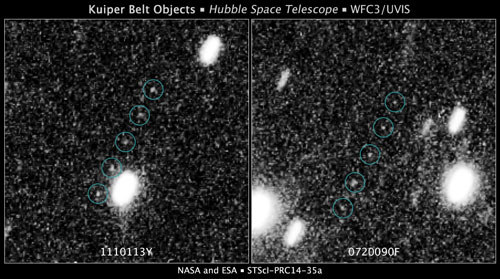 NASA's Hubble Space Telescope has been given the go-ahead to conduct an intensive search for a suitable outer solar system object that the New Horizons spacecraft could visit after the probe streaks though the Pluto system in July 2015.
NASA's Hubble Space Telescope has been given the go-ahead to conduct an intensive search for a suitable outer solar system object that the New Horizons spacecraft could visit after the probe streaks though the Pluto system in July 2015.
Jul 1st, 2014
Read more
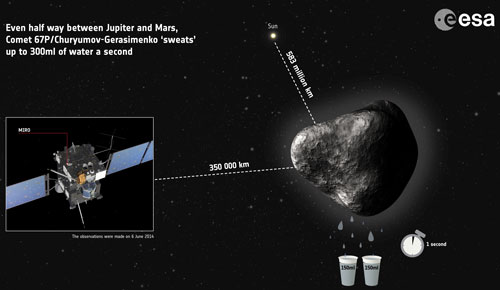 ESA's Rosetta spacecraft has found that comet 67P/Churyumov-Gerasimenko is releasing the equivalent of two small glasses of water into space every second, even at a cold 583 million kilometres from the Sun.
ESA's Rosetta spacecraft has found that comet 67P/Churyumov-Gerasimenko is releasing the equivalent of two small glasses of water into space every second, even at a cold 583 million kilometres from the Sun.
Jun 30th, 2014
Read more
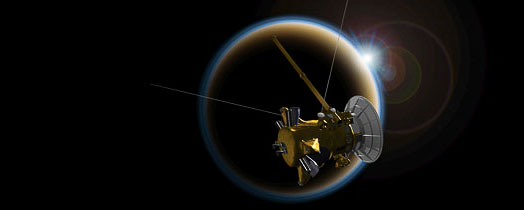 Bright spots in a large lake on Titan suggest that Saturn's largest moon supports processes similar to Earth's water cycle.
Bright spots in a large lake on Titan suggest that Saturn's largest moon supports processes similar to Earth's water cycle.
Jun 30th, 2014
Read more
 China is a step closer to setting up a lunar base after a 105-day manned airtight test, in which the bio-regenerative life support systems of Lunar Palace 1 sustained the lives of three trial volunteers.
China is a step closer to setting up a lunar base after a 105-day manned airtight test, in which the bio-regenerative life support systems of Lunar Palace 1 sustained the lives of three trial volunteers.
Jun 27th, 2014
Read more
Researchers have provided another piece of the puzzle with their precise measurements of a rapidly rotating neutron star: one of the smallest, densest stars in the universe.
Jun 27th, 2014
Read more
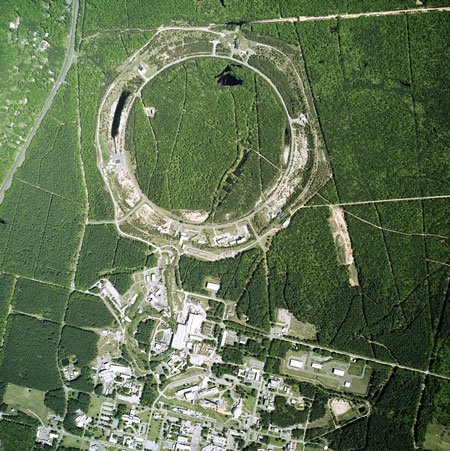 In the first fleeting milliseconds after the Big Bang, the Universe consisted of a superdense soup of quarks and gluons that were hundreds of thousands of times hotter than the Sun. Over the next 14 billion years, the Universe stretched and cooled, leaving traces of the original brew trapped inside the protons and neutrons of atoms. Scientists are smashing atoms together at high speeds to liberate and observe these remnants of the early Universe and gain a better understanding of our cosmic beginnings.
In the first fleeting milliseconds after the Big Bang, the Universe consisted of a superdense soup of quarks and gluons that were hundreds of thousands of times hotter than the Sun. Over the next 14 billion years, the Universe stretched and cooled, leaving traces of the original brew trapped inside the protons and neutrons of atoms. Scientists are smashing atoms together at high speeds to liberate and observe these remnants of the early Universe and gain a better understanding of our cosmic beginnings.
Jun 27th, 2014
Read more
China plans to land a rover vehicle on Mars in 2020 and bring back soil samples from the planet a decade later, a top scientist with the country's lunar probe mission said yesterday.
Jun 26th, 2014
Read more
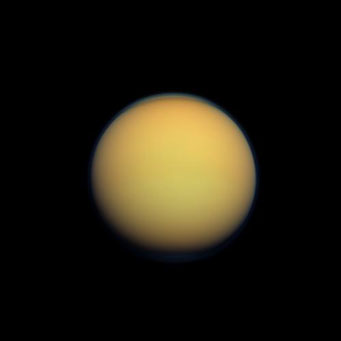 A new study has found firm evidence that nitrogen in the atmosphere of Saturn's moon Titan originated in conditions similar to the cold birthplace of the most ancient comets from the Oort cloud. The finding rules out the possibility that Titan's building blocks formed within the warm disk of material thought to have surrounded the infant planet Saturn during its formation.
A new study has found firm evidence that nitrogen in the atmosphere of Saturn's moon Titan originated in conditions similar to the cold birthplace of the most ancient comets from the Oort cloud. The finding rules out the possibility that Titan's building blocks formed within the warm disk of material thought to have surrounded the infant planet Saturn during its formation.
Jun 26th, 2014
Read more
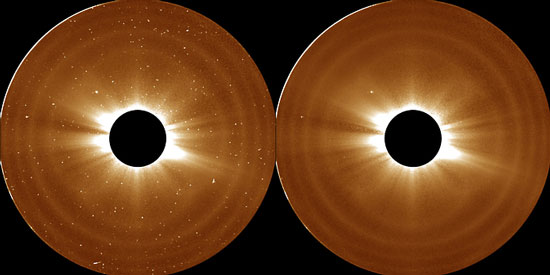 Using the Solar Terrestrial Relations Observatory, scientists have found that this atmosphere, called the corona, is even larger than thought, extending out some 5 million miles above the sun's surface - the equivalent of 12 solar radii.
Using the Solar Terrestrial Relations Observatory, scientists have found that this atmosphere, called the corona, is even larger than thought, extending out some 5 million miles above the sun's surface - the equivalent of 12 solar radii.
Jun 25th, 2014
Read more
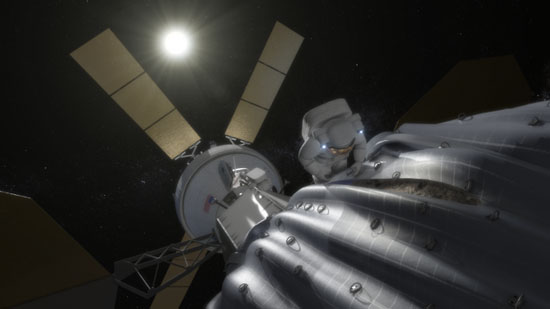 Space may appear empty - a soundless vacuum, but it's not an absolute void. It flows with electric activity that is not visible to our eyes. NASA is developing plans to send humans to an asteroid, and wants to know more about the electrical environment explorers will encounter there.
Space may appear empty - a soundless vacuum, but it's not an absolute void. It flows with electric activity that is not visible to our eyes. NASA is developing plans to send humans to an asteroid, and wants to know more about the electrical environment explorers will encounter there.
Jun 25th, 2014
Read more
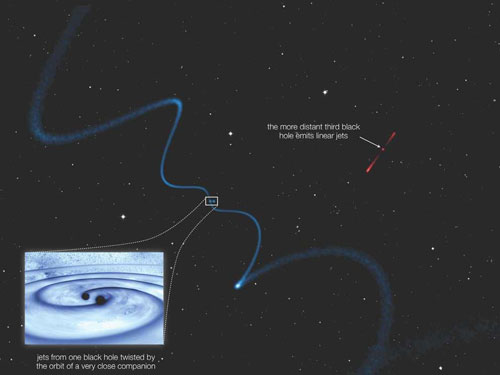 Astronomers have discovered three closely orbiting supermassive black holes in a galaxy more than 4 billion light years away. This is the tightest trio of black holes known to date. The discovery suggests that such closely packed supermassive black holes are far more common than previously thought.
Astronomers have discovered three closely orbiting supermassive black holes in a galaxy more than 4 billion light years away. This is the tightest trio of black holes known to date. The discovery suggests that such closely packed supermassive black holes are far more common than previously thought.
Jun 25th, 2014
Read more
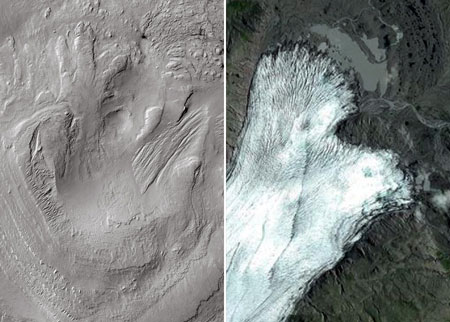 3,500 million years ago the Martian crater Gale, through which the NASA rover Curiosity is currently traversing, was covered with glaciers, mainly over its central mound. Very cold liquid water also flowed through its rivers and lakes on the lower-lying areas, forming landscapes similar to those which can be found in Iceland or Alaska. This is reflected in an analysis of the images taken by the spacecraft orbiting the red planet.
3,500 million years ago the Martian crater Gale, through which the NASA rover Curiosity is currently traversing, was covered with glaciers, mainly over its central mound. Very cold liquid water also flowed through its rivers and lakes on the lower-lying areas, forming landscapes similar to those which can be found in Iceland or Alaska. This is reflected in an analysis of the images taken by the spacecraft orbiting the red planet.
Jun 25th, 2014
Read more
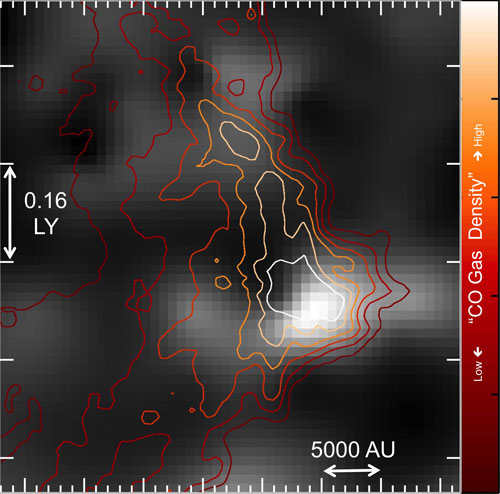 Astronomers have made the first large-scale maps of icy material where stars are forming. In a challenge to conventional ideas about the formation of water in space, they find ice in regions with little dust or gas.
Astronomers have made the first large-scale maps of icy material where stars are forming. In a challenge to conventional ideas about the formation of water in space, they find ice in regions with little dust or gas.
Jun 24th, 2014
Read more
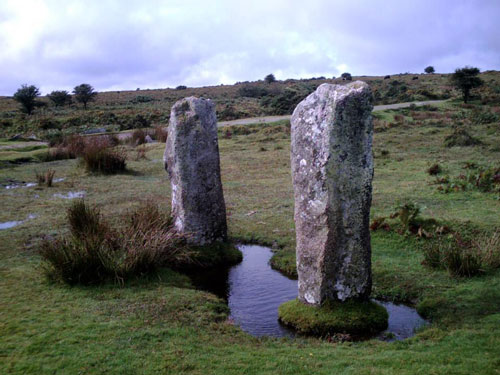 This week, a developing field of research that merges astronomical techniques with the study of ancient man-made features and the surrounding landscapes will be highlighted at the National Astronomy Meeting (NAM) 2014 in Portsmouth.
This week, a developing field of research that merges astronomical techniques with the study of ancient man-made features and the surrounding landscapes will be highlighted at the National Astronomy Meeting (NAM) 2014 in Portsmouth.
Jun 24th, 2014
Read more
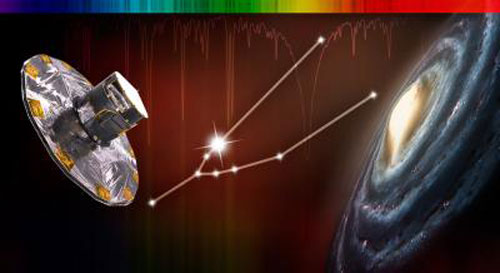 A team of astronomers have created the first standardized set of measurement guidelines for analyzing and cataloging stars.
A team of astronomers have created the first standardized set of measurement guidelines for analyzing and cataloging stars.
Jun 24th, 2014
Read more
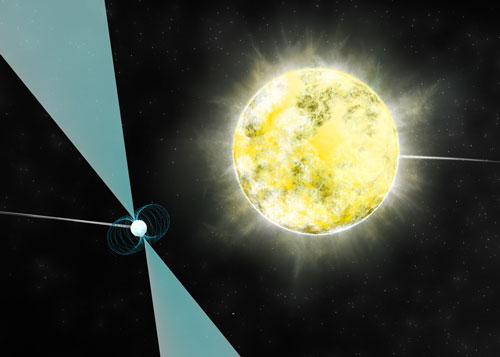 A team of astronomers has identified possibly the coldest, faintest white dwarf star ever detected. This ancient stellar remnant is so cool that its carbon has crystallized, forming - in effect - an Earth-size diamond in space.
A team of astronomers has identified possibly the coldest, faintest white dwarf star ever detected. This ancient stellar remnant is so cool that its carbon has crystallized, forming - in effect - an Earth-size diamond in space.
Jun 24th, 2014
Read more
Scientists have discovered a new peculiarity of the Martian atmosphere. They had analyzed satellite-acquired data and concluded that the dust particles in the planet's atmosphere can be of two types.
Jun 23rd, 2014
Read more
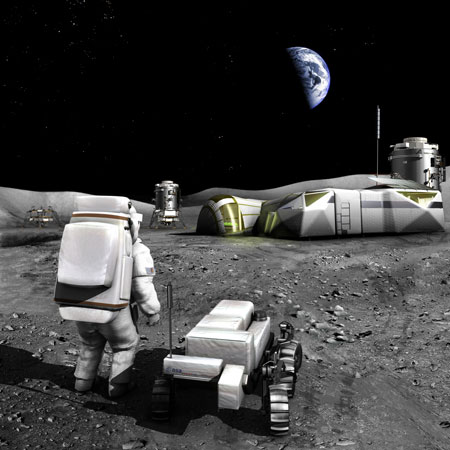 Who owns the moon? What kind of valuable resources does Earth's nearest neighbor hold? And how - and when - can we access them? All these questions will be debated today by a panel comprised of scientists, entrepreneurs and policy makers brought together by Google Lunar XPRIZE at the EuroScience Open Forum (ESOF) 2014.
Who owns the moon? What kind of valuable resources does Earth's nearest neighbor hold? And how - and when - can we access them? All these questions will be debated today by a panel comprised of scientists, entrepreneurs and policy makers brought together by Google Lunar XPRIZE at the EuroScience Open Forum (ESOF) 2014.
Jun 23rd, 2014
Read more
 NASA's Hubble Space Telescope has been given the go-ahead to conduct an intensive search for a suitable outer solar system object that the New Horizons spacecraft could visit after the probe streaks though the Pluto system in July 2015.
NASA's Hubble Space Telescope has been given the go-ahead to conduct an intensive search for a suitable outer solar system object that the New Horizons spacecraft could visit after the probe streaks though the Pluto system in July 2015.
 Subscribe to our Space Exploration News feed
Subscribe to our Space Exploration News feed












